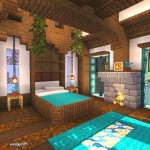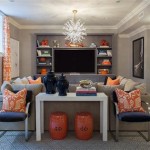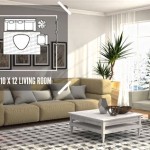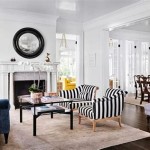Elevating Your Living Space: Creative TV Entertainment Unit Decor Ideas
The television entertainment unit serves as a focal point in many living rooms, acting as a hub for relaxation, entertainment, and social gatherings. Beyond its functional purpose of housing a television and related electronics, the entertainment unit presents an opportunity to showcase personal style and elevate the overall aesthetic of a living space. Thoughtful decoration can transform a standard entertainment unit into a visually appealing and organized element that complements the existing décor. This article will explore several decor ideas for television entertainment units, focusing on strategies to optimize space, integrate decorative elements, and create a cohesive and stylish environment.
Optimizing Space and Storage
Before embarking on the decorative aspects, it's crucial to address the functional needs of the entertainment unit. A well-organized unit not only looks better but also simplifies the use of electronic devices and minimizes clutter. Effective storage solutions are paramount in this endeavor. Consider incorporating a combination of open and closed storage to accommodate various items.
Open shelving provides easy access to frequently used items such as gaming consoles, streaming devices, or decorative objects. These shelves can be styled with books, plants, or curated collections to add visual interest. Closed cabinets, on the other hand, are ideal for concealing less visually appealing items like media players, remote controls, and cables. The use of doors or drawers helps maintain a clean and uncluttered appearance.
Cable management is an often-overlooked but critical aspect of entertainment unit organization. Wires and cables can quickly become tangled and unsightly, detracting from the overall aesthetic. Invest in cable ties, sleeves, or organizers to bundle and conceal wires behind the unit. Dedicated cable management systems can significantly improve the appearance of the space and prevent tripping hazards. Furthermore, consider using power strips with surge protection to safeguard electronic devices from power surges and to easily power down devices when not in use.
Depending on the layout of the room, consider the placement of the entertainment unit relative to other furniture. Ensure that there is adequate space for comfortable viewing and ease of movement. If the unit is particularly large, consider anchoring it to the wall for added stability, especially if there are young children or pets in the home.
When selecting storage containers for items within the entertainment unit, prioritize functionality and aesthetics. Baskets, bins, and boxes in coordinating colors and materials can add a touch of sophistication while keeping items organized. Labeling these containers can further enhance organization and make it easier to locate specific items. Remember to regularly declutter the entertainment unit to prevent the accumulation of unnecessary items and maintain a clean and organized space.
Integrating Decorative Elements and Style
Once the functional aspects of the entertainment unit are addressed, the focus shifts to incorporating decorative elements that reflect personal style and complement the overall décor of the living room. This involves carefully selecting accessories, artwork, and lighting to create a visually appealing and cohesive space.
Artwork and photographs can add personality and visual interest to the entertainment unit. Consider placing framed prints, paintings, or photographs on shelves or above the unit. The size and style of the artwork should be proportionate to the size of the unit and the surrounding space. When selecting artwork, consider the color palette and themes of the living room to ensure a harmonious and cohesive look. Grouping small framed pieces together can create a gallery-like effect and add visual impact.
Plants can bring life and vibrancy to the entertainment unit. Incorporating potted plants, succulents, or air plants can add a touch of nature and create a calming atmosphere. Choose plants that thrive in indoor environments with low to moderate light. Arrange plants on shelves or use plant stands to add height and dimension. Consider using decorative pots or containers to complement the overall style of the unit. Fake plants can also be used to achieve a similar effect without requiring maintenance.
Decorative objects such as vases, sculptures, and candles can add personality and visual interest to the entertainment unit. Choose objects that reflect personal style and complement the overall aesthetic of the living room. Arrange objects in groupings of odd numbers to create a visually appealing composition. Consider using varying heights and textures to add depth and dimension. Avoid overcrowding the shelves with too many objects, as this can create a cluttered and overwhelming look.
Lighting plays a crucial role in enhancing the ambiance of the entertainment unit. Consider incorporating accent lighting such as LED strip lights, spotlights, or table lamps to highlight specific areas or objects. LED strip lights can be placed behind the television to create a backlit effect, which can reduce eye strain and enhance the viewing experience. Spotlights can be used to highlight artwork or decorative objects. Table lamps can add a warm and inviting glow to the space. The type and placement of lighting should be carefully considered to create the desired mood and atmosphere.
Consider mirroring elements from other areas of the living room onto the entertainment unit to create a cohesive aesthetic. This could involve repeating colors, patterns, or textures from the sofa, curtains, or area rug. By creating a sense of visual harmony, the entertainment unit will seamlessly integrate into the overall décor of the room.
Creating a Cohesive and Stylish Environment
Ultimately, the goal of decorating a television entertainment unit is to create a cohesive and stylish environment that complements the overall aesthetic of the living room. This requires careful consideration of color palettes, materials, and styles. The entertainment unit should not only be functional and organized but also visually appealing and harmonious with the rest of the décor.
Start by establishing a consistent color palette for the entertainment unit and the surrounding area. Choose colors that complement the existing décor of the living room and create a sense of visual harmony. Consider using neutral colors for the base of the unit and adding pops of color through accessories and artwork. The color palette should be carefully considered to create the desired mood and atmosphere.
Consider the materials used in the entertainment unit and the surrounding furniture. Choose materials that complement each other and create a cohesive look. For example, if the living room features natural wood furniture, consider incorporating wood accents into the entertainment unit. If the living room has a more modern aesthetic, consider using materials such as glass, metal, or lacquered surfaces. The materials should be carefully selected to create a sense of balance and harmony.
The style of the entertainment unit should be consistent with the overall style of the living room. Whether the living room is traditional, modern, minimalist, or eclectic, the entertainment unit should reflect the same style. Choose furniture and accessories that complement the overall aesthetic and create a cohesive look. Avoid mixing and matching styles that clash or conflict with each other. The style should be carefully considered to create a sense of unity and harmony.
Personalization is key to creating a space that feels authentic and reflects individual style. Incorporate personal touches such as family photos, travel souvenirs, or handmade crafts to add personality and character to the entertainment unit. These personal touches will make the space feel more inviting and comfortable. However, be mindful of clutter and avoid overcrowding the shelves with too many personal items.
Regularly assess and update the décor of the entertainment unit to keep it fresh and relevant. As personal tastes evolve or trends change, consider making small adjustments to the accessories, artwork, or lighting to refresh the look of the unit. Swapping out a few key pieces can make a big difference in the overall aesthetic. This will ensure that the entertainment unit remains a stylish and functional focal point in the living room for years to come.
By carefully considering the functional needs, decorative elements, and overall style, it is possible to transform a television entertainment unit into a visually appealing and organized element that enhances the living space. The key is to prioritize functionality, integrate decorative elements that reflect personal style, and create a cohesive and harmonious environment.

40 Tv Stand Decor Ideas To Elevate Your Living Room Built In Shelves Ins Basement Rooms

Ideas To Decorate Tv Unit For Your Home Design Cafe

40 Tv Stand Decor Ideas To Elevate Your Living Room

40 Ideas For Decorating Around The Tv A House Full Of Sunshine

9 Tv Stand Decor Ideas To Enhance Your Living Room Taskrabbit Blog

Farmhouse Tv Decor Ideas

How To Decorate Around A Tv Liz Marie Blog

19 Tv Console Decor Ideas Living Spaces

5 Tv Unit Decor Ideas B2c Furniture

20 Stunning Tv Stand Decor Ideas Displate Blog







